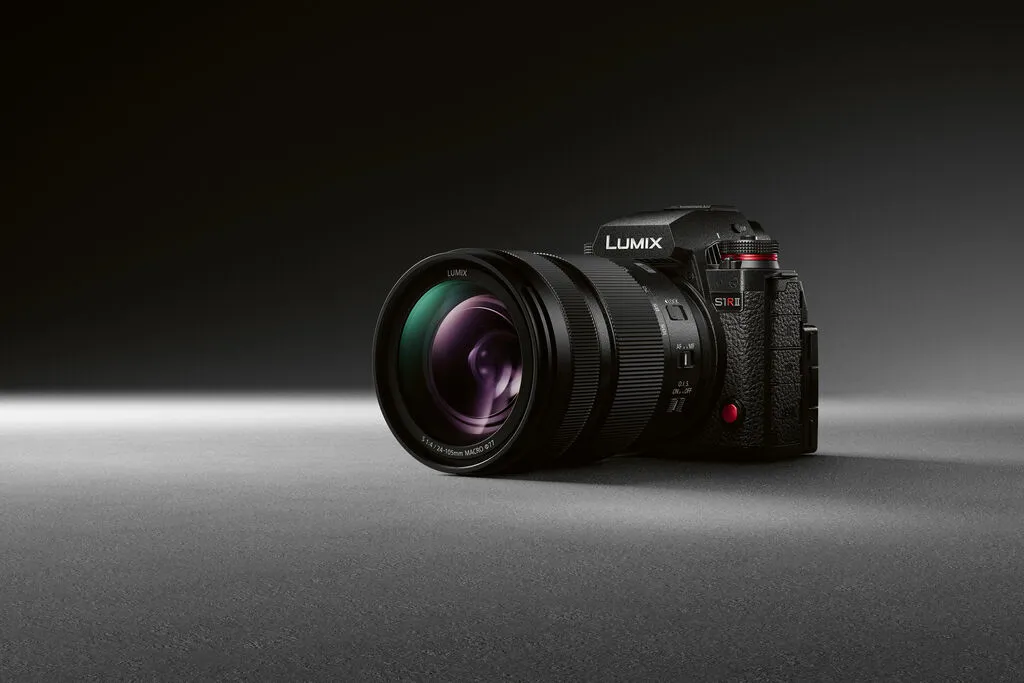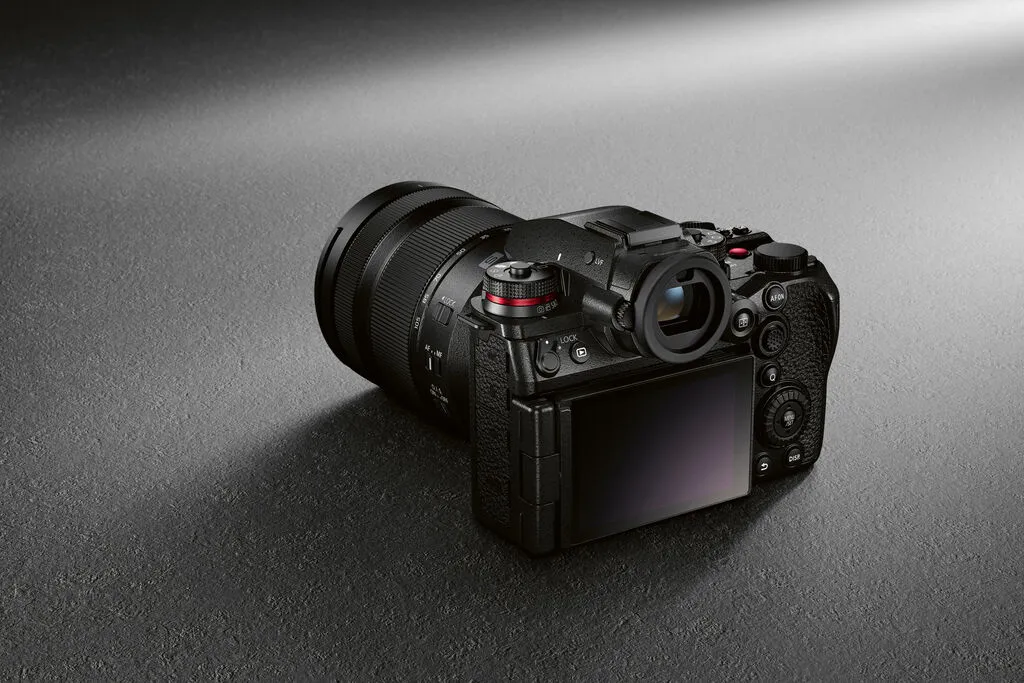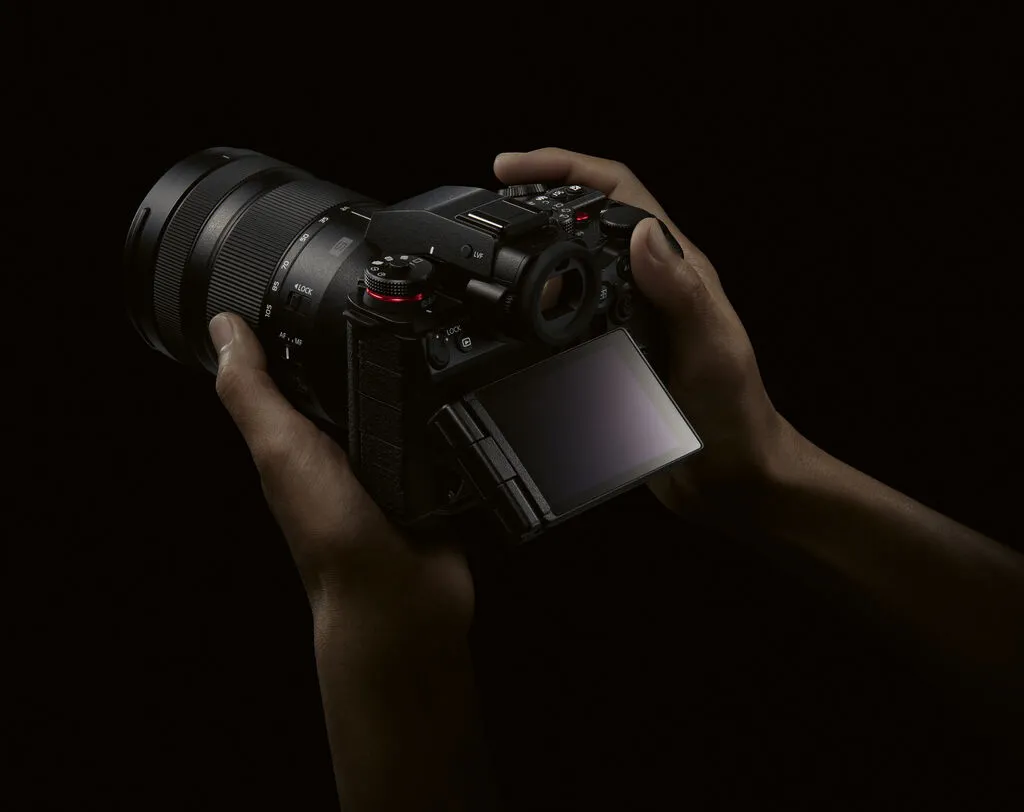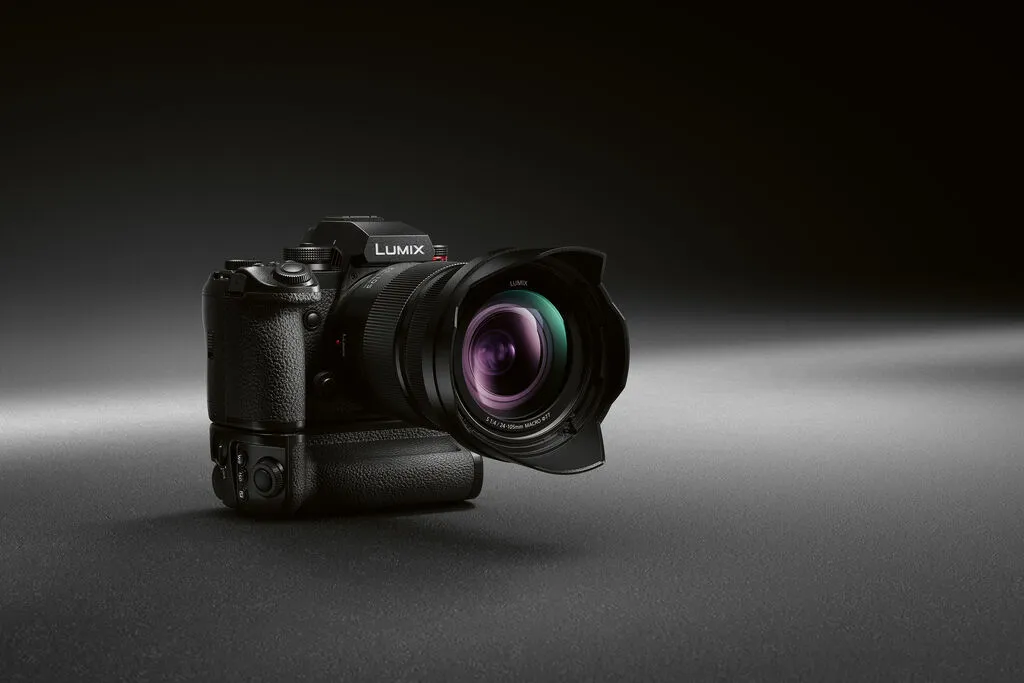
Panasonic LUMIX S1RII released on February 25, the major media and organizations have got the relevant machine for review in advance, the following is a summary of the results of the review, listing the key information that needs attention.
The Panasonic LUMIX DC-S1RII comes with a new back-illuminated sensor (IMX366) that is not stacked and reads at speeds close to that of the 24-megapixel model (IMX410), which means that the bottom of this one isn’t really that fast.
| Base ISO | 2nd gain step | |
| Standard color mode | ISO 80 | ISO 400 |
| Cinelike D2, V2, A2 | ISO 160 | ISO 800 |
| HLG | ISO 320 | ISO 1600 |
| V-Log | ISO 200 | ISO 1000 |
| V-Log + DR Expansion | ISO 400 | ISO 2000 |
Equipped with Dual Conversion Gain (two stops of native ISO), users can manually select two reading modes to suit the needs of different shooting scenarios. The first native ISO comes to 80 in standard color mode.

In terms of focusing performance, the camera is equipped with second-generation image-plane phase-difference AF, as well as significantly improved subject recognition and tracking algorithms, which can recognize a wide range of subjects, including people, animals, vehicles, and more. However, there is still room for improvement in its focusing system, with some scenes failing to focus, and its final performance will need to be further optimized with subsequent firmware updates. Of course there is no mention of an AI chip anywhere, naturally.
The new “Cinelike A2” color mode is suitable for both photo and video shooting, and sits between the “D2” and “V2” profiles, with a softer style to meet the The new “Cinelike A2” color mode is for photo and video shooting, and sits between the “D2” and “V2” profiles, with a softer style to meet specific color style needs. The camera is equipped with a real-time LUT function that can load up to 39 LUTs, and supports combinations of two LUTs with different intensities, making it easy for users to quickly adjust color styles while shooting. For the first time, there’s also a Folscolor option, which helps users get a clearer picture of the exposure in both photo and video modes, and determine which parts of the image may be overexposed or underexposed, for improved shooting accuracy. There’s not much new in this section.

It supports a wide range of video specifications, such as offering resolutions close to UHD 8K, DCI 8K, and an 8.1K resolution option with a 1.89:1 ratio, and features video shooting assistance features common to Panasonic products, such as shutter angle, waveform monitor, and more, as well as support for 4-channel audio and 32-bit Float audio recording via an XLR2 accessory, and adapting anamorphic lenses.
| 422/HQ | |||||
| 60, 50 | 1.04 | ||||
| 60, 50, 30, 25, 24 | 1.52 | ||||
| 120, 100 | 1.10 | 4:2:2 | – | ||
| 16:9 Modes | |||||
|---|---|---|---|---|---|
| 8.0K | 7680 x 4320 | 30, 25, 24 | 1.0 | 4:2:0 | – |
| 5.9K | 5888 x 3312 | 30, 25, 24 | 1.0 | – | |
| 60, 50, 48 | 1.11 | – | |||
| UHD 4K | 3840 x 2160 | 30, 25, 24 | 1.0 | 4:2:2 | 422/HQ |
| 60, 50 | 1.11 | ||||
| 60, 50, 30, 25, 24 | 1.52 | ||||
| 120, 100 | 1.17 | 4:2:2 | – | ||
| 3:2 Modes | |||||
| 6.2K open gate* | 6432 x 4228 | 30, 25, 24 | 1.0 | 4:2:0 | – |
| 4:3 Modes | |||||
| 4.7K | 4736 x 3552 | 60, 50, 48, 30, 25, 24 | 1.65 | 4:2:0 | 422/HQ** |
The camera supports Open Gate shooting, capable of shooting at full resolution from the 3:2 area of the sensor and outputting 6.4K video (higher resolution Open Gate will be supported in a future firmware update), and supports ProRes 422 or ProRes RAW format recording to a CFexpress Type B card or external SSD.
| UHD | DCI | |||
|---|---|---|---|---|
| Crop | Rolling shutter | Crop | Rolling shutter | |
| 8K, 5.xK*, 4K 30/25/24 | 1.00 | 24.9ms | 1.00 | 22.4ms |
| 5.xK*, 4K 50/60 | 1.11 | 15.4ms | 1.04 | 15.3ms |
| 4K 100/120 | 1.17 | 7.3ms | 1.10 | 7.3ms |
| 4K/30 DRExp* | 1.00 | 31.7ms | 1.00 | 29.8ms |
When shooting video, it has a more pronounced rolling shutter phenomenon (big jello) than the stacked sensor models, which is better than the Sony ones but still not as good as the Canon EOS R5 II and Nikon Z 8.
| Output dimensions | Frame Rates | Crop | MOV | ProRes | |
|---|---|---|---|---|---|
| 1.89:1 modes | |||||
| 8,1K | 8128 x 4288 | 30, 25, 24 | 1.0 | 4:2:0 | – |
| 5,8K | 5760 x 4030 | 30, 25, 24 | 1.0 | 422/HQ | |
| 30, 25, 24 | 1.31 | – | RAW/HQ | ||
| 60, 50, 48 | 1.04 | 4:2:0 | – | ||
| DCI 4K | 4096 x 2160 | 30, 25, 24 | 1.0 | 4:2:2 | |
En termes de conception et d'ergonomie, le Panasonic LUMIX DC-S1RM2 s'inspire de la gamme S5II plus compacte et légère que la série S1 initiale. Il intègre un ventilateur et une sortie d'aération, garantissant une certaine stabilité pour les tournages prolongés (bien que moins performant que la série « GH »). Sa poignée a été améliorée avec une prise en main plus profonde. La disposition des boutons a été revue : moins de boutons Fn à l'avant, un nouveau bouton REC, un commutateur dédié photo/vidéo/S&Q, un sélecteur de modes avec verrouillage et des positions personnalisables pour s'adapter aux habitudes des utilisateurs.

L'écran arrière est articulé de manière similaire au Sony α7R V, combinant basculement et orientation variable, évitant ainsi toute gêne avec les connecteurs micro, casque et HDMI. Cela facilite la visualisation sous différents angles de prise de vue.
Pour l'alimentation, le Panasonic LUMIX DC-S1RM2 utilise la même batterie DMW-BLK22 de 15,8 Wh que le S5II, offrant une autonomie moyenne. Il est compatible avec le nouveau grip DMW-BG2 permettant l'échange à chaud des batteries, améliorant ainsi l'endurance lors de configurations exigeantes.

Globalement, le Panasonic LUMIX DC-S1RM2, en tant que nouveau modèle, présente des atouts compétitifs en résolution, fonctionnalités vidéo et design. Son prix est avantageux pour sa catégorie (prévu autour de 20 998 ¥ en Chine ; un tarif à 19 998 ¥ serait très raisonnable, tandis qu'au-delà de 22 998 ¥, le rapport qualité-prix deviendrait moyen). Toutefois, la stabilité de l'autofocus et la gestion de l'effet rolling shutter en vidéo nécessitent des améliorations.
Panasonic Lumix DC-S1RII | Canon EOS R5 II | Sony α7R V | Panasonic Lumix DC-S1R | |
|---|---|---|---|---|
| Prix conseillé | $3300 | $4300 | $3900 | $3700 |
| Nombre de pixels | 44 Mpx | 45 Mpx | 61 Mpx | 47 Mpx |
| Type de capteur | CMOS rétro-éclairé | CMOS empilé | CMOS rétro-éclairé | CMOS FSI |
| Stabilisation (IBIS / Synchronisée) | 8,0 IL / 7,0 IL | – / 8,5 IL | 8,0 IL / – | 6,0 IL / 7,0 IL |
| Rafale max (Méca. / Obtr. élec.) | 10 i/s / 40 i/s | 12 i/s / 30 i/s | 10 i/s / | 9 i/s / |
| Rés. viseur / grossissement | OLED 5,76 M pts / 0,78x | OLED 5,76 M pts / 0,76x | 9,44 M pts OLED 0,9x | OLED 5,76 M pts / 0,78x |
| Écran arrière | 3,2" 2,1 M pts inclinable + articulé | 3,2" 2,1 M pts articulé | 3,2" 2,1 M pts inclinable + articulé | 3,2" 2,1 M pts inclinable 2 sens |
| Résolution vidéo max | 8,1K [1,89:1] / 30p UHD 8K / 30p 5,9K pleine largeur / 60p | DCI 8K / 60p UHD 8K / 60p | UHD 8K / 24p | 5K [3:2] / 30p UHD 4K / 60p |
| Options de sortie | MOV H.264 MOV H.265 ProRes 422 ProRes RAW | MP4 H.264 MP4 H.265 Canon Raw (/Light) | MOV H.264 MOV H.265 | MOV H.265 MP4 H.264 |
| Formats de stockage | 1x SD UHS-II 1x CFe B SSD externe | 1x SD UHS-II 1x CFe B | 2x SD UHS-II / CFe A | 1x SD UHS-II 1x CFe B / XQD |
| Vitesse de synchronisation du flash | 1/250 s | 1/250 s 1/160 s | 1/250 s | 1/320 s |
| Options de sortie HDR (Photos / Vidéo) | – / Vidéo HLG | HEIF HDR PQ / Vidéo HDR PQ | HEIF HLG / Vidéo HLG | Photo HLG / Vidéo HLG |
| USB | USB-C 3.2 Gen 2 (10 Gbps) | USB-C 3.2 Gen 2 (10 Gbps) | USB-C 3.2 Gen 2 (10 Gbps) | USB-C 3.1 Gen 1 (5 Gbps) |
| Autonomie de la batterie LCD / EVF | 350 / 300 | 540 / 250 | 530 / 440 | 380 / 360 |
| Dimensions | 134 x 102 x 92 mm | 139 x 101 x 94 mm | 131 x 97 x 82 mm | 149 x 110 x 97 mm |
| Poids | 795 g | 746 g | 723 g | 1 020 g |